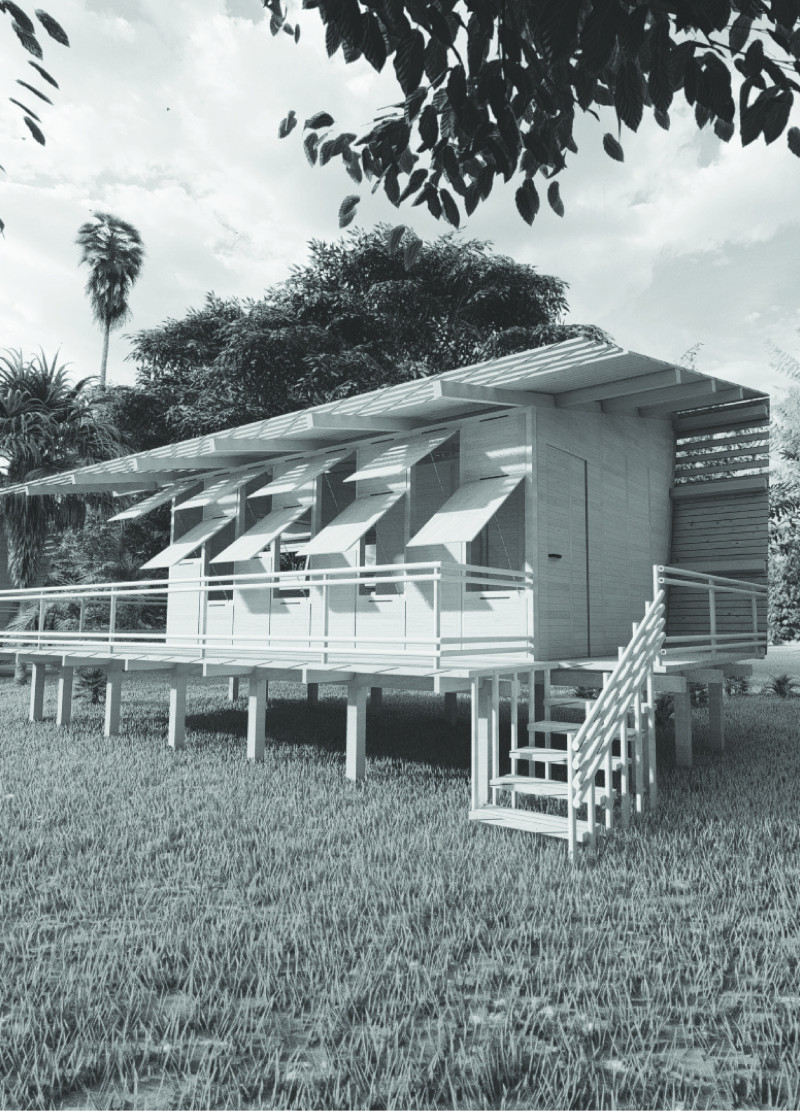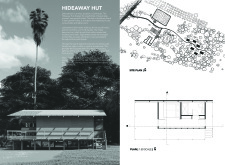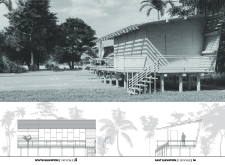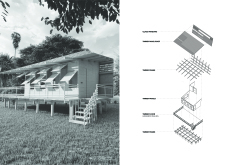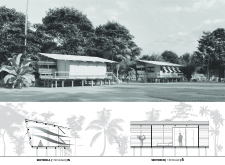5 key facts about this project
The Hideaway Hut is situated in Cambodia and focuses on addressing the issue of deforestation. It highlights the use of sustainably-sourced new-growth timber. The design centers on creating a space that is adaptable and functional. By using lightweight timber elements, the structure aims to provide stability while maximizing use. This approach reflects an intelligent response to ecological challenges.
Structural Framework
The framework consists of laminated timber beams that form the main elements of the roof, floor, and north facade. This choice provides robustness while allowing flexibility in the layout. The beams create a shell, supporting smaller, segmented wooden panel walls. This combination enhances both functionality and visual appeal, ensuring the design is coherent and effective.
Adaptive Facade
A key aspect is the south facade, featuring segmented panels that can open and close at different points. This arrangement allows occupants to control their surroundings easily. Adjusting the panels can change privacy, light, airflow, and views. This adaptability enhances the experience of living in the Hut and promotes a connection with the surrounding environment.
Interior Configuration
Inside, the Hut makes efficient use of space and allows for various activities. Design elements include a Murphy bed and storage that blend into the wall, giving the interior a tidy appearance. This setup supports activities like indoor yoga classes when outdoor weather is not suitable. The focus remains on functionality, allowing for diverse use of the living area.
The exterior of the Hideaway Hut, with its carefully designed facade, encourages interaction with nature while its adaptable features ensure a comfortable living environment. Each detail of the design contributes to a sense of harmony between the structure and its landscape.


